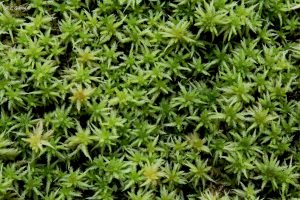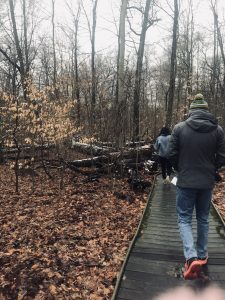
This past Monday we went on a field trip to Brown’s Lake Bog Preserve. It is known to have a rare plant community due to the naturally occurring acidic properties of sphagnum moss, while simultaneously being able to insulate the water below from the rapid air temperature changes. Brown’s Lake Bog is also “one of the few remaining peatland sites in Ohio that contains an open kettle lake surrounded by a floating sphagnum moss mat” (The College of Wooster Tree Ring Lab). What caught my attention, while walking along the Boardwalk was the large presence of sphagnum moss I saw. While Professor Bourne was talking about different elements of the bog, what was amazing to learn from him was sphagnum moss’s ability to retain a lot of water. In that being said, I thought that must have been the reason there was a huge presence of it here; it was because there was a pool of water that it could live and thrive in. But to my discovery, in doing this assignment, I learned that it was the other way around, that sphagnum moss was the primary component of any bog and that it is the large reason that bogs exist in the first place. While I was looking at the sphagnum moss up close, what was really fascinating about it was seeing the individual “leaves” and how they were short and were slightly toothed. It was also interesting to see how they did not seem to grow higher than 4 inches from the ground, but I guess that is expected with moss. The last feature of the sphagnum moss that stood out to me was the vibrant green color it had, especially the moss that was under the water as it was the most visible thing you could see.
Works Cited:
Wiles, Greg. “AMRE at Brown’s Lake Bog.” The College of Wooster Tree Ring Lab, 19 June 2018, treering.voices.wooster.edu/2018/06/19/amre-at-browns-lake-bog/.


